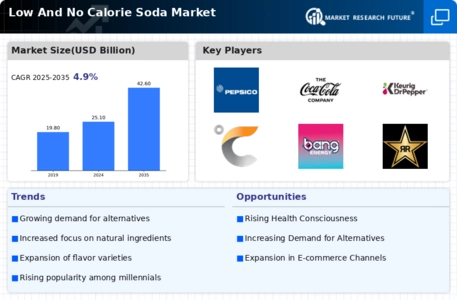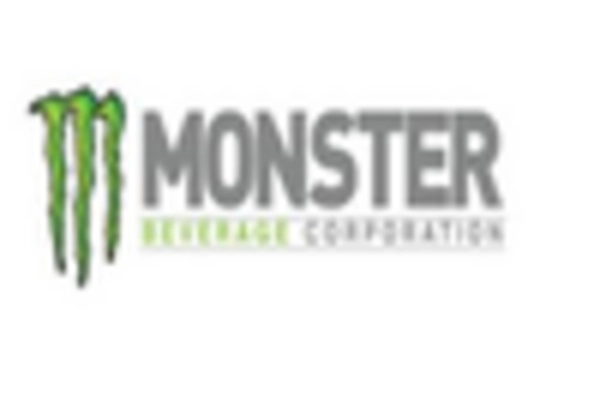North America : Market Leader in Innovation
North America is the largest market for low and no calorie sodas, holding approximately 45% of the global market share. The region's growth is driven by increasing health consciousness among consumers, regulatory support for healthier beverage options, and innovative product launches by major players. The demand for low-calorie alternatives is further fueled by rising obesity rates and a shift towards healthier lifestyles.
The United States is the leading country in this market, followed by Canada. Key players such as Coca-Cola, PepsiCo, and Dr Pepper Snapple Group dominate the competitive landscape, continuously innovating to meet consumer preferences. The presence of these major brands, along with a growing number of niche players, enhances market dynamics, making North America a hub for low and no calorie soda innovations.
Europe : Emerging Health-Conscious Market
Europe is witnessing a significant shift towards low and no calorie sodas, driven by increasing health awareness and regulatory initiatives promoting healthier beverage choices. The region holds approximately 30% of the global market share, with Germany and the UK being the largest markets. The European Union's regulations on sugar content in beverages are catalyzing this trend, encouraging manufacturers to innovate and reformulate their products.
Germany leads the market, followed closely by the UK, where brands like Nestle and Britvic are making substantial inroads. The competitive landscape is characterized by a mix of established players and emerging brands focusing on health-oriented products. The presence of stringent regulations and consumer demand for transparency in ingredients further shapes the market, pushing companies to adapt and thrive in this evolving environment.
Asia-Pacific : Rapidly Growing Beverage Sector
Asia-Pacific is rapidly emerging as a significant player in the low and no calorie soda market, driven by urbanization, changing lifestyles, and increasing disposable incomes. The region holds approximately 20% of the global market share, with China and Japan leading the way. The growing trend of health and wellness among consumers is prompting manufacturers to introduce innovative low-calorie options to cater to this demand.
China is the largest market in the region, followed by Japan, where companies like Asahi Group Holdings and Monster Beverage Corporation are expanding their product lines. The competitive landscape is becoming increasingly dynamic, with both The Low And No Calorie Soda Market share. The presence of a diverse consumer base and the rising popularity of health-focused beverages are key factors driving growth in this sector, making Asia-Pacific a focal point for future investments.
Middle East and Africa : Untapped Market Opportunities
The Middle East and Africa region is gradually recognizing the potential of low and no calorie sodas, driven by a growing awareness of health issues and changing consumer preferences. This region currently holds about 5% of the global market share, with South Africa and the UAE being the most prominent markets. The increasing prevalence of lifestyle-related diseases is prompting consumers to seek healthier beverage alternatives, creating opportunities for market expansion.
South Africa leads the market, followed by the UAE, where brands are beginning to introduce low-calorie options to cater to the health-conscious demographic. The competitive landscape is still developing, with both international and local brands exploring this segment. As awareness of health and wellness continues to rise, the region is poised for significant growth in the low and no calorie soda market, attracting investments and innovations from key players.


















Leave a Comment